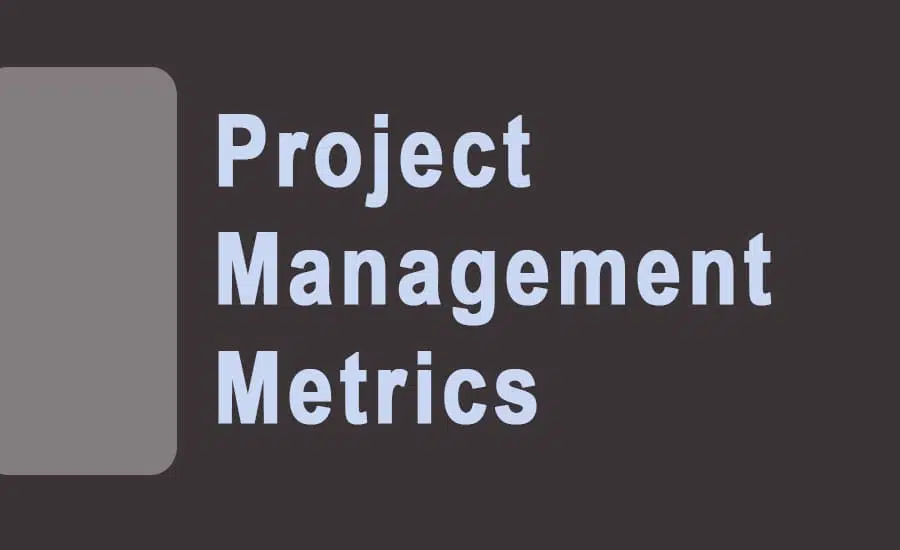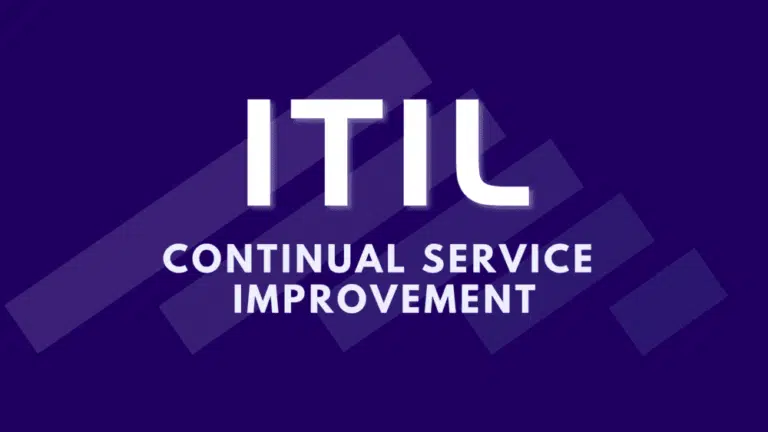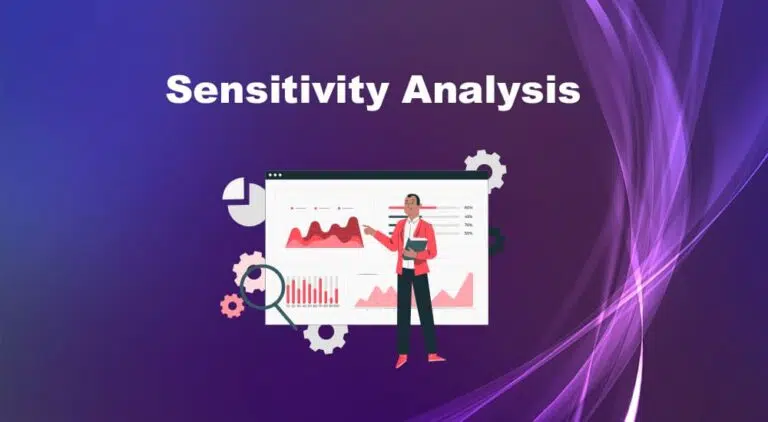Tracking project progress is key in project management, and project management metrics show how well you are doing and can help find room for improvement.
Today’s post will discuss project metrics and show how they are useful in project management.
Let’s get started.
Project Management Metrics
Project management metrics have a critical role in monitoring and controlling project progress. You identify your project metrics in the initiation phase according to your requirements. Metrics are tracked and validated during each milestone to confirm that the project is progressing as planned.
Project metrics can be related to cost, time, scope, quality, risk, etc.
Project management metrics can track resource utilization, cost performance, and schedule projections.
These metrics show stakeholders if the project is meeting planned progress or not. You should take corrective action if you do not meet a certain milestone. In addition, project metrics allow you to identify issues and opportunities to improve the process.
Project management metrics enhance the quality of deliverables, provided that they are relevant and meaningful to the project.
Project metrics are specific to the project, so you must tailor the metrics to suit your project’s requirements.
How to Choose Project Management Metrics
Determine the objective you want to achieve and then choose metrics by:
- Asking questions about what you want from these metrics.
- Identifying Key Performance Indicators (KPIs).
- Examining the data you are collecting.
Once you understand your requirements, finding your metrics will be easy. The project management metrics should be:
- Simple
- Consistent over time
- Measurable
- Relevant to the project
- Meaningful to your team
Examples of Project Management Metrics
The following are examples of key project management metrics:
Earned Value Management
EVM helps measure project performance numerically. This allows the identification and analysis of variances and performance. Also, earned value management provides accurate information in terms of schedule and cost so you can assess performance properly.
EVM can be used to:
- Track progress against the plan
- Identify potential project problems
- Assess the health of the project
- Help in forecasting
Some EVM elements include schedule variance, cost variance, and cost performance index.
Schedule Variance: This metric measures how much the project schedule has deviated from the schedule baseline. You calculate it by subtracting the actual duration from the planned duration.
Schedule Variance = Planned Duration – Actual Duration
Cost Variance: This measures how much the project budget has changed from the original plan. You calculate it by subtracting the actual cost from the planned cost.
Cost Variance = Planned Cost – Actual Cost
The higher the cost variance, the more the project is over budget.
Cost Performance Index (CPI): This metric measures how well a project meets or stays within its budget. You calculate it by dividing the earned value by the actual cost.
Cost Performance Index = Earned Value / Actual Cost
The higher the CPI, the more money is spent on a project.
Productivity: This measures project efficiency. It shows how well a company uses its resources to generate the desired outcome.
Productivity = Units of Input / Units of Output
Quality: This is how well a product or service meets requirements and expectations. You can measure quality at different points in time, such as during design, production, delivery, or use.
Some common quality metrics include Defects per Unit (DPU) and Failure Rate.
Scope of Work: This metric refers to a project’s size and/or complexity. You can measure it in terms of time, money, or resources.
The formula to calculate the scope of work is as follows:
Scope of Work = Total Estimated Cost / Average Hourly Rate
Customer Satisfaction: Customer satisfaction is how well customers perceive their met needs. You can collect this metric through surveys, interviews, or focus groups.
Customer Satisfaction Score = (Total Survey Point Score / Total Questions) x 100
Gross Profit Margin: Margin refers to the difference between what a company charges for its products and services and the direct costs associated with producing and delivering them.
Gross Profit Margin = Gross Revenue – Cost of Materials and Labor
The higher the gross profit margin, the more money a company makes on a project.
Return On Investment (ROI): This measures the benefit or value of an investment. You can calculate it by dividing the benefit of the investment by invested cost.
Return on Investment = (Benefit – Cost) / Cost
The higher the ROI, the better the investment is.
It can also be expressed as a percentage and looks like this:
ROI % = [(Gain from Investment – Costs)/Costs] x 100%
Employee Satisfaction Score: This metric measures the happiness of employees. You can collect it through surveys, interviews, or focus groups.
Employee Satisfaction Score = (Total Survey Point Score / Total Questions) x 100%
There is a direct correlation between the satisfaction and morale of employees and business success.
Benefits of Using Metrics in Project Management
- Evaluation of Project Performance: By tracking and measuring metrics, you can evaluate how well your project is progressing.
- Improvement of Process Efficiency: You can improve process efficiency by identifying and monitoring bottlenecks in the project workflow.
- Find the Trend: Monitoring key metrics helps you identify how the project is trending.
- Prediction of Future Outcomes: By following current progress, you can predict the future outcome using the earned value management calculation.
- Job Satisfaction: Using data to guide business decisions gives employees a greater opportunity for success and personal achievement, leading to an overall feeling of accomplishment.
- Identification of Process Improvement Opportunities: By monitoring and analyzing metrics, you can identify areas where you can improve the process to help streamline the workflow.
- Higher Chance of Meeting Deadlines: You can better meet deadlines by understanding how much time is needed to complete a task.
- Accurate Estimation Resource and Duration: You can develop a more accurate estimate of time and resources required by tracking metrics.
Implementing Project Metrics
After identifying project metrics, you will implement them on your project. The implementation depends on the metrics and available tools. This can be manual entry or automated tracking.
Manual Entry
Sales metrics will require manual entry into an Excel spreadsheet or other tool by the sales team. The metric can help you find total closed deals.
Automated Tracking
You can track website hits automatically using web analytics software. For example, you can see how many visitors visited your site during a given time.
Automated tracking is possible using project management software that includes time-tracking features.
There are many ways to implement project metrics, and the method chosen will depend on the metric you are tracking. You must ensure that you record it accurately and consistently.
Some common ways to implement metrics include:
- Recording data in a spreadsheet or database
- Displaying data on a dashboard or other visualization tool
- Sending alerts and notifications when you cross thresholds
- Running reports periodically or on-demand
The method used for implementing project metrics will vary depending on the organization’s needs and preferences. Find a system that works well for the team and provides accurate data.
What is the Difference Between KPI, Metric, OKR, and MBO?
These are commonly used terms in project management and have distinct meanings.
KPI: KPI stands for Key Performance Indicator; it is a quantifiable measure of performance over time for a specific objective. It shows if the process is a success or not.
Metric: A metric is a quantifiable unit of measurement used to track the status of a particular process.
OKR: OKR stands for Objectives and Key Results; it is a goal-setting framework to define measurable goals and track the outcomes.
MBO: MBO stands for Management by Objectives, here manager and employees agree on performance goals and then develop a plan to achieve these goals collaboratively.
Project Management Metrics Vs KPIs
Project metrics are different from the key performance indicator.
Key performance indicators measure the performance of project parameters. For example, cost performance index, cost variance, schedule performance index, schedule variance, etc.
Metrics measure the project parameters that you can use to calculate the KPI. For example, actual cost spent, planned value, earned value, etc.
You can easily calculate project variances and performance indexes with these values.
Summary
You can track several metrics and perform analysis in project management. The list of project management metrics is endless. To have an optimal plan going forward, identify your main goals and decide which metrics will best help you achieve them.

I am Mohammad Fahad Usmani, B.E. PMP, PMI-RMP. I have been blogging on project management topics since 2011. To date, thousands of professionals have passed the PMP exam using my resources.







